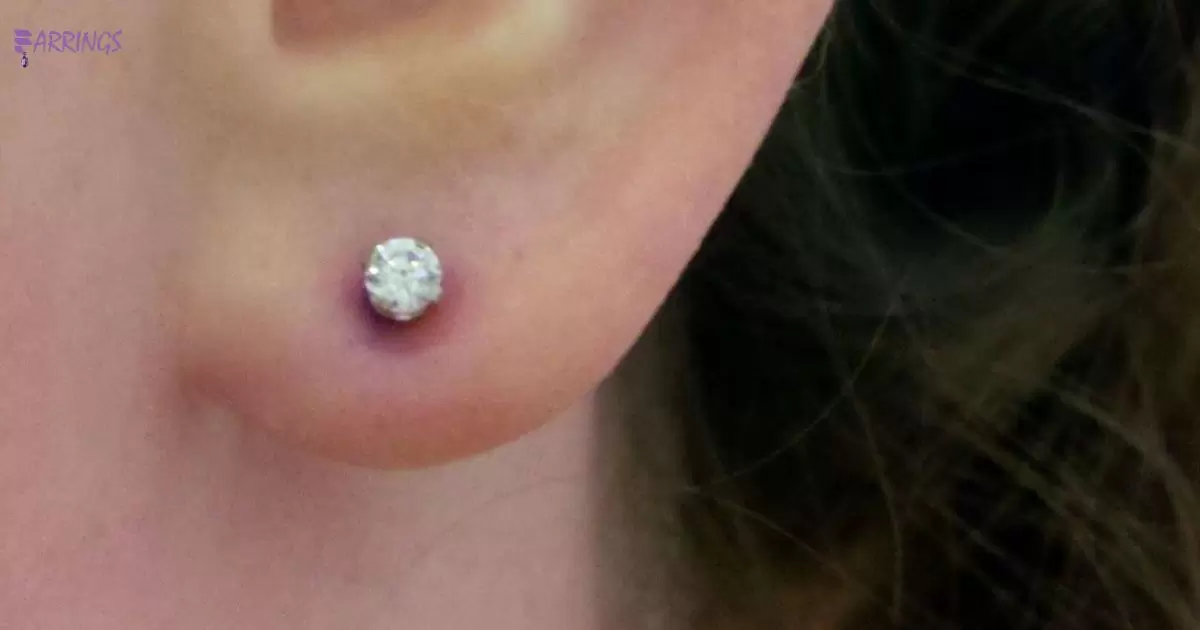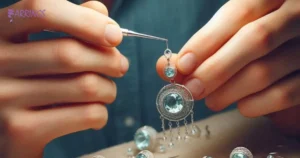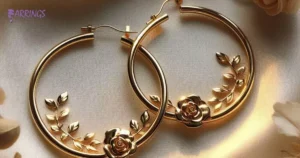Plastic earrings can cause infections if proper care isn’t taken. The porous material can trap dirt, bacteria, and bodily fluids against the skin. This creates an environment ripe for infection to develop in the piercing site.
Ouch, your ears are red, swollen and itchy, a nasty infection seems to be brewing. But you’ve been so careful…or have you? Do plastic earrings cause infection? Believe it or not, those cheap plastic studs could be the hidden culprit behind your painful plight.
Cheap plastic earrings can harbor bacteria, leading to painful infections. Consider this when choosing a necklace to pair with dangling earrings to avoid exacerbating any potential issues.
Key Takeaways
- Plastic earrings are generally safe but can cause infections if proper hygiene isn’t maintained.
- Regular cleaning of both earrings and earlobes is essential to prevent infections.
- Choose high-quality hypoallergenic plastic earrings to minimize the risk of allergic reactions and infections.
- Pay attention to signs of discomfort or irritation and seek medical attention if needed.
- By following these precautions, you can enjoy wearing plastic earrings without compromising your health.
Types Of Plastic Earrings
| Type of Plastic Earring | Description |
| Acrylic | Lightweight and durable; available in various colors and designs. |
| Resin | Versatile and stylish; often features unique patterns and textures. |
| Polymer | Known for its hypoallergenic properties; suitable for sensitive ears. |
| Lucite | Transparent plastic; offers a modern and sleek aesthetic. |
| Cellulose Acetate | Made from natural fibers; eco-friendly option with a vintage appeal. |
| Silicone | Soft and flexible; ideal for sports or individuals with active lifestyles. |
When it comes to plastic earrings, there’s a variety to choose from. Some popular types include acrylic, resin, and polymer earrings. Acrylic earrings are lightweight and come in vibrant colors, perfect for adding a pop of fun to any outfit.
Resin earrings often feature unique designs and patterns, providing a stylish statement piece for fashion-forward individuals. Polymer earrings are known for their durability and versatility, offering a wide range of shapes and styles to suit different tastes and preferences.
Whether you prefer bold and colorful or subtle and elegant, there’s a type of plastic earring to match your style and personality.
How to Clean Plastic Earrings?
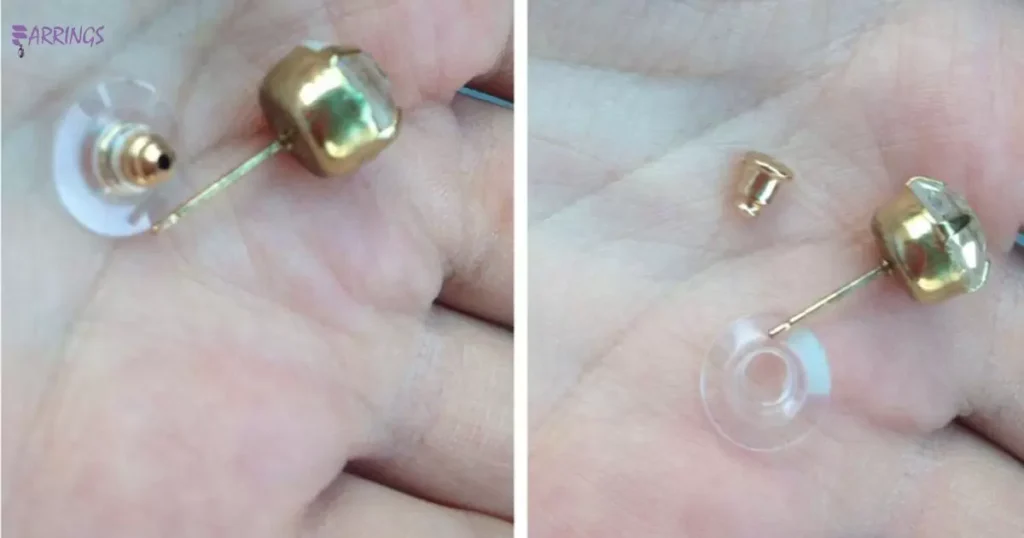
To clean plastic earrings, gently wipe them with warm, soapy water using a soft cloth. Rinse thoroughly, avoiding harsh chemicals, then pat dry with a clean towel. For stubborn dirt, use a gentle toothbrush to scrub them gently. Let them air dry completely before wearing again to keep them looking their best and bacteria-free.
Daily Cleaning
For daily cleaning of plastic earrings, gently wipe them with a soft cloth dampened in warm, soapy water. Rinse thoroughly with clean water to remove any soap residue.
Pat dry with a clean towel and allow them to air dry completely before wearing again. This routine maintenance will help keep your earrings clean and free from bacteria buildup, ensuring they remain in good condition for longer periods.
Weekly Cleaning
For weekly cleaning of plastic earrings, soak them in warm, soapy water for a few minutes. Gently scrub with a soft toothbrush to remove any buildup or residue. Rinse thoroughly and air dry before wearing again to maintain their cleanliness and shine. Regular weekly cleaning helps prevent bacteria buildup and keeps your earrings looking their best.
Cleaning Fresh Piercings
For cleaning fresh piercings, begin by washing your hands thoroughly with soap and water. Mix a saline solution by dissolving non-iodized sea salt in warm water.
Gently cleanse the piercing with the saline solution using a cotton ball or pad. Avoid rotating or twisting the earring to prevent irritation. Repeat this process twice a day to promote healing and prevent infections.
Benefits of Wearing Plastic Earrings
- Its lightweight nature makes plastic earrings comfortable for extended wear.
- Hypoallergenic properties reduce the risk of allergic reactions common with metal earrings.
- A wide range of colors and designs offer versatile styling options.
- Affordable pricing makes plastic earrings accessible to a broader range of individuals.
- Durability and resistance to tarnishing or corrosion ensure long-lasting use.
- Plastic earrings provide a comfortable, stylish, and budget-friendly accessory option.
Risks of Wearing Plastic Earrings

Wearing plastic earrings may pose certain risks if proper care is not taken. One potential risk is allergic reactions, especially in individuals with sensitive skin.
While plastic earrings are generally hypoallergenic, some people may still experience irritation due to the materials used or dyes present in the earrings. Another risk associated with wearing plastic earrings is skin irritation and discomfort.
Prolonged wear of tight or improperly fitted earrings can cause friction and pressure on the earlobes, leading to soreness or even inflammation.
It’s essential to choose earrings that fit comfortably and to avoid wearing them for extended periods, especially during activities that may cause excessive sweating or friction. Regularly inspecting the earlobes for signs of irritation and giving the skin time to breathe without earrings can help mitigate these risks.
Potential Allergies And Skin Reactions
Some individuals may experience potential allergies or skin reactions to certain earring materials. These reactions can manifest as redness, itching, or irritation around the earlobe area. It’s essential to be mindful of any signs of discomfort and switch to hypoallergenic earrings if necessary.
Materials such as nickel, commonly found in metal earrings, are known allergens for some people. Opting for plastic earrings or those made from medical-grade materials can help minimize the risk of allergic reactions. Always test new earrings on a small area of skin before wearing them for an extended period to avoid potential discomfort or irritation.
Potential Infections
Infections can arise if proper hygiene practices are not followed. Bacteria can accumulate on earrings and in piercings, leading to redness and swelling. Symptoms may include pain, discharge, or fever, indicating a need for medical attention.
Regular cleaning and care help prevent infections and maintain ear health. If any signs of infection appear, seek prompt treatment to avoid complications.
Discomfort And Pain
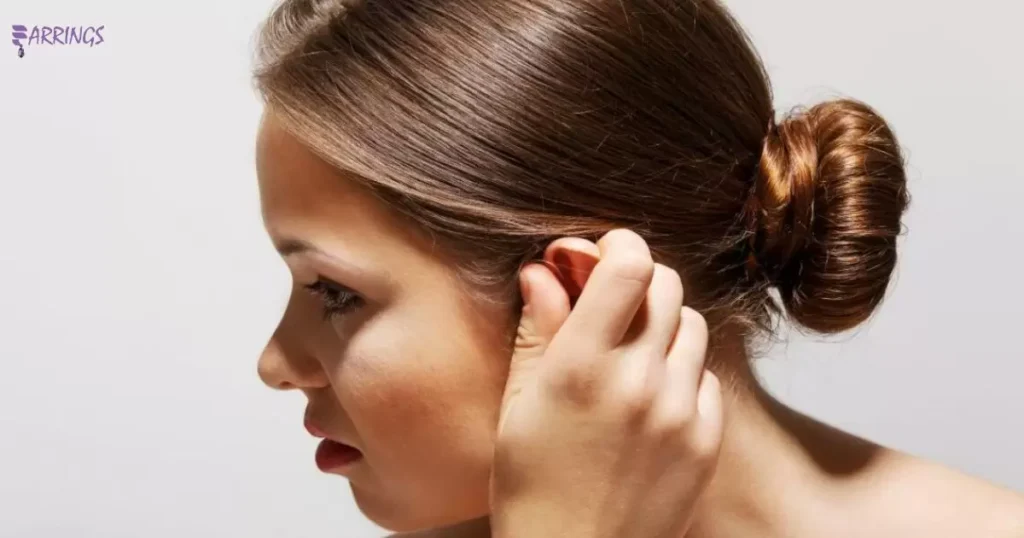
Experiencing discomfort and pain around your earrings can indicate an underlying issue. If your earlobes feel tender or sore, remove the earrings and clean the area gently.
Avoid touching or manipulating the earrings excessively to prevent further irritation. If the discomfort persists or worsens, consult a healthcare professional for guidance and treatment.
Skin Irritation
Skin irritation around pierced ears can cause discomfort and pain. It may manifest as redness, itching, or a rash. Avoid scratching or further aggravating the affected area.
Cleanse the area gently and apply a soothing, hypoallergenic moisturizer to alleviate irritation. If symptoms persist or worsen, consult a healthcare professional for proper diagnosis and treatment.
Allergic Reactions
Allergic reactions to earrings can cause discomfort and pain around the pierced area. Symptoms may include itching, redness, and swelling of the skin. If you suspect an allergic reaction, remove the earrings immediately and clean the area gently.
Consider switching to hypoallergenic earrings made from materials like titanium or medical-grade plastic to prevent future reactions.
Tips To Keep In Mind To Prevent Earring Infection
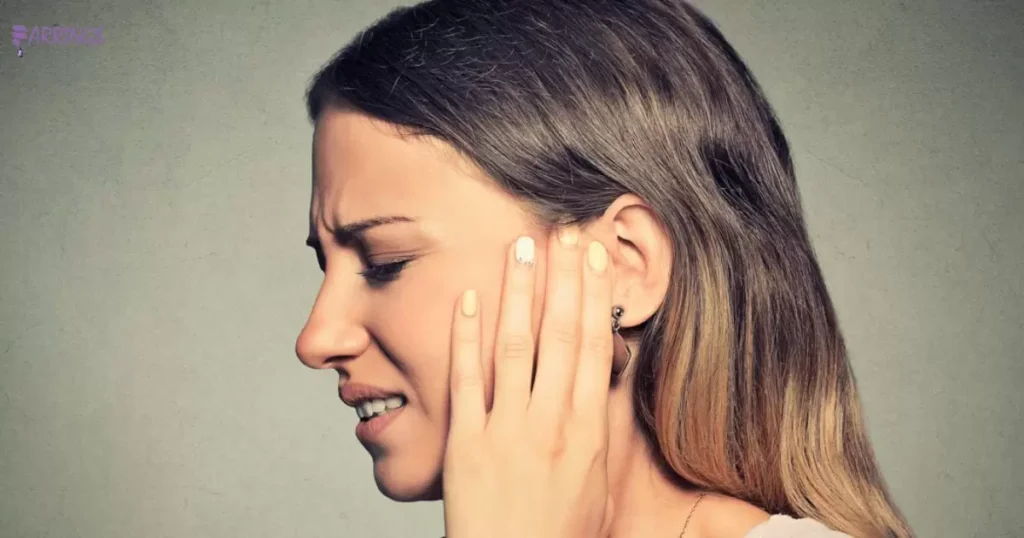
To prevent earring infections, always wash your hands thoroughly before touching your earrings or ears. Avoid sleeping or swimming with earrings to minimize the risk of bacteria buildup. Regularly clean your earrings and earlobes with a mild soap and water solution.
Ensure your earrings are made of hypoallergenic materials to reduce the likelihood of allergic reactions. When getting a new piercing, choose a reputable piercer who follows proper hygiene protocols. Lastly, pay attention to any signs of infection, such as redness, swelling, or discharge, and seek medical attention if necessary.
Factors Affecting Plastic Earring Infection
Several factors can influence the likelihood of developing an infection from plastic earrings. Poor hygiene practices, such as infrequent cleaning of both earrings and earlobes, can increase the risk of bacterial buildup.
Allergic reactions to certain dyes or coatings used in plastic earrings may contribute to irritation and infection. Ensuring proper piercing techniques and using sterile equipment during piercing can also play a role in preventing infections.
Individuals with newly pierced ears are particularly susceptible to infections if proper care is not taken during the healing process. It’s essential to follow aftercare instructions provided by a professional piercer, including cleaning the piercing site with saline solution regularly.
Choosing high-quality plastic earrings made from medical-grade materials can further reduce the risk of infections and ensure a safe and comfortable wearing experience.
Signs of Plastic Earring Infection
Signs of infection from plastic earrings include redness, swelling, and tenderness around the pierced area. Pus or discharge may also be present, indicating an ongoing infection. If you experience these symptoms, remove the earrings immediately and clean the area gently.
In severe cases, infection may lead to fever or chills. Persistent pain or discomfort, especially when touching or moving the earring, is another indicator. If you notice any of these signs, seek medical attention promptly to prevent further complications and ensure proper treatment.
Prevention of Plastic Earring Infection

To prevent infection when wearing plastic earrings, maintain good hygiene practices for both your earrings and earlobes. Clean your earrings regularly with mild soap and water, avoiding harsh chemicals.
Ensure your earlobes are also clean before wearing earrings to minimize bacterial buildup. When getting a new piercing, choose a reputable piercer who follows proper sterilization procedures to reduce the risk of infection.
Opt for high-quality plastic earrings made from hypoallergenic materials to minimize the chances of allergic reactions and infections. Regularly inspect your earlobes for signs of irritation or infection, and seek medical attention if you notice any concerning symptoms.
Frequently Asked Questions
Do plastic piercings get infected?
Yes, plastic piercings can get infected if proper hygiene is not maintained. Regular cleaning and avoiding harsh chemicals help prevent infections.
Is plastic safe for piercings?
Yes, plastic is generally safe for piercings as it is hypoallergenic and less likely to cause reactions. Opting for high-quality plastic earrings can help minimize the risk of infections and allergic reactions.
How long can you wear plastic earrings?
You can wear plastic earrings for as long as you feel comfortable, but it’s advisable to remove them before sleeping.
Conclusion
While plastic earrings are generally safe and hypoallergenic, proper hygiene practices are crucial to prevent infections. Regular cleaning of both the earrings and earlobes, along with choosing high-quality hypoallergenic earrings, can significantly reduce the risk of infections.
It’s essential to pay attention to any signs of discomfort, pain, or irritation and seek prompt medical attention if needed. By following these preventive measures, individuals can enjoy wearing plastic earrings without compromising their health or style.
